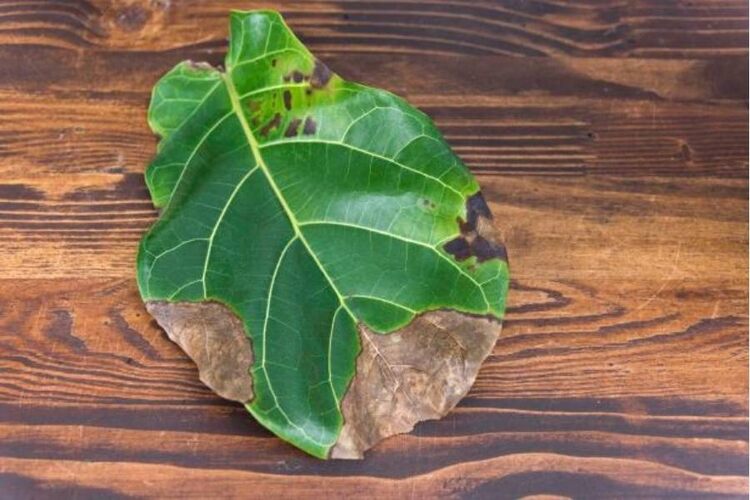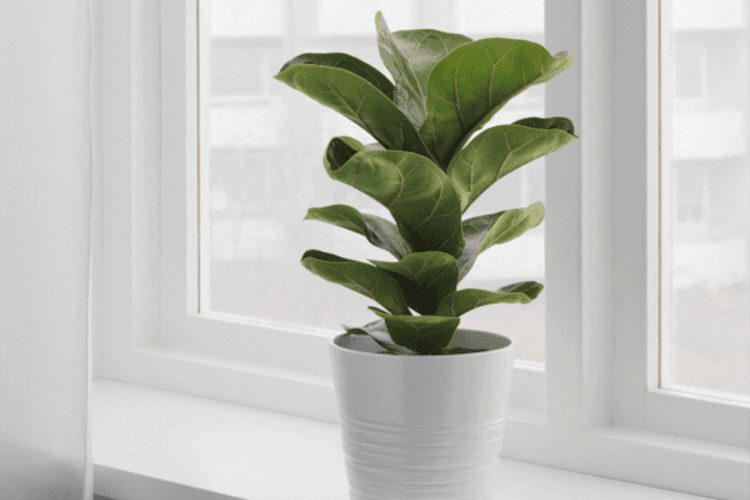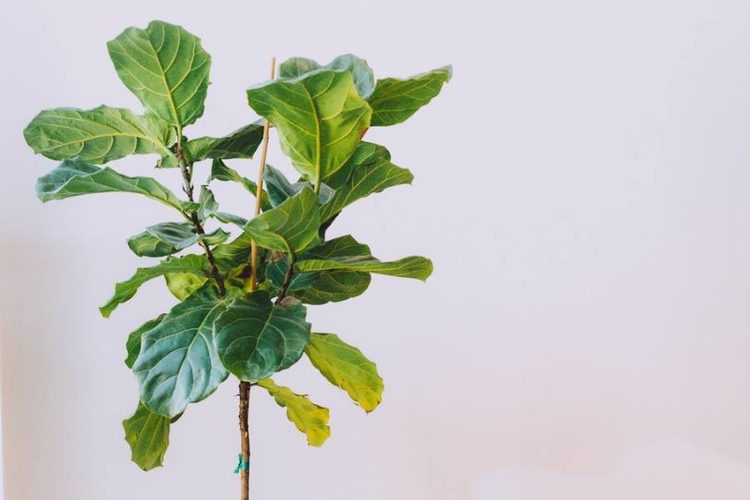Fiddle Leaf Fig Root Rot: Main Causes & Helpful Methods

The fig tree is one of the crops susceptible to diseases, especially root rot. When the plant is healthy, the roots are very supple, but when they show signs of deterioration, they are pretty mushy and unpleasant. What causes fiddle leaf fig root rot? What are the methods for dealing with root rot in figs? For more information about root rot in fiddle leaf fig, let’s read on to discover!
Why Does Fiddle Leaf Fig Root Rot?
The main causes of root rot in fiddle leaf figs are overwatering and poor drainage. However, the most common cause lies in plants with pythium and phytophthora. Root rot treatment for fiddle leaf figs is quite complicated. So, like many other plants, to treat this one, it is more important to find out the cause of the disease.
Pythium and phytophthora are not fungi; they are oomycetes. So, you will not be able to apply a fungal treatment to these two organisms.
- Pythium: This organism is more common than Phytophthora and causes root rot in young fiddle leaf figs. It is not a specific disease but a family comprising 125 species. When pythium enters the plant, leaf drop and stem rot are the primary manifestations.
- Phytophthora: It is less common than pythium. Symptoms, when they invade, are severe root rot.
In addition, pythium and phytophthora thrive in high-humidity conditions. The presence of moisture in the tree can be easily explained by the tree being overwatered or having poor drainage. So, how does the plant behave after infection with Pythium, Phytophthora, or root rot? Let’s find out below.

Some Common Signs
It is easily noticed that it is difficult to identify signs of damage from the roots and root ball. However, a few factors often come into play when roots rot. First, their sturdy leaves will soon begin to droop. You might think your fig tree is wilting, but it’s a prime example of overwatering your tree.
In addition, fiddle leaf fig leaves droop in response to climate and humidity. Besides drooping leaves, a few other symptoms that can also appear in your fig tree are leaves turning brown at the trunk or the whole plant. These symptoms are all caused by a fungal infection from overwatering the plant, causing it not to be able to drain.
In general, the above manifestations are caused by minor fungal infections caused by too much water and not enough drainage. And you know what happens when a leaf isn’t green? There is no chlorophyll responsible for absorbing light and transferring it to food.
How To Handle Root Rot?
We mentioned the causes and symptoms of root rot explicitly. So that you don’t have to wait too long, here are the steps to dealing with root rot.
Remove fig leaves and clean roots
First, make sure you have entirely removed the brown fiddle leaf fig leaves from their pot. Next, you need to lift the plant to wash the roots and remove any excess soil clinging to the roots. Once done, you can quickly tell which roots are rotten and which are still healthy.
Prune damaged leaves and roots
After removing the leaves and cleaning the roots, you need to prune the damaged leaves and roots so that they do not spread to the healthy parts. In addition, you also need to prune old or damaged leaves to help the plant put all its nutrients into feeding the young leaves.
It is not advisable to prune most of the plant’s leaves because it dramatically affects the plant’s photosynthesis. For the health of the plant, you should keep about 70% of the leaves on the plant.
Hydrogen peroxide-based spray
Even with the rotten roots removed, some root rot organisms, such as phytophthora and pythium, can still attach to healthy roots and soon cause additional root damage as the young fig tree grows. Therefore, all you need to do is use a hydrogen peroxide solution and spray it on the healthy root. This solution will work best if mixed with water in a 1:2 ratio.
This solution will help you disinfect the pot and kill the fungus before placing the plant back in the pot.
Replace the soil mixture with a new one
Finally, you can place your plant in a pot. At this step, depending on your needs, you can either replace the pot with a new one or keep the old one if you have sprayed it with hydrogen peroxide. However, whether you use a unique one or reuse an old one, make sure your potting soil is brand new.
The best soil to plant in is one that has good drainage and allows excess water to drain, preventing root rot. In addition, the pot also needs to have enough drainage holes for the best drainage. If you’re using a homemade soil mix made from compost, be sure to kill off pathogens with a hydrogen peroxide spray. For best results, water the plant with the solution about 2-3 times a day before replanting a week later.
How To Prevent Root Rot?
Figs are very susceptible to diseases. Therefore, your care process needs to be very careful to minimize the disease infection in the tree.
Here are a few tips we think can help you in the process of preventing root rot in fiddle leaf fig roots. Continue reading for a clearer picture.
Regular watering
First, you need to water your plants regularly, but with a moderate amount. Watering too much or too little will make the plant more susceptible to disease, particularly if it is watered a lot.
As you know, root rot organisms such as Pythium and Phytophthora are fond of moist soil conditions. So overwatering the plant is the most significant cause of root rot because the soil becomes too wet and the drainage process is reduced. On rainy days, you should also stop watering the plants because it is possible that your watering causes the plants to become saturated and unable to drain.
For the best results, you should make sure the roots can dry out between waterings by checking the dryness of the potting soil using a soil moisture meter or poking the top two inches of the ground with your finger. You also need to pay attention when soil conditions are too dry because it can also be a good condition for pathogens from the roots to penetrate deeper into the soil.
Provide drainage
Next, providing a regular water system for plants is extremely important, especially if you grow plants in containers or pots. Ensure that the container or pot has enough drainage holes to allow the soil to aerate for better oxygen transport to the roots and allow water to drain at the correct rate. Not only that, but it also avoids standing water for too long and causing severe problems, including root rot.
Regularly check the soil
Checking the soil is a great tip to help prevent root rot. As soon as you water your plants, make sure to parallel the soil test. When the soil is too wet, watering should avoid wetting the ground and allowing bacteria to multiply quickly. You also need to aerate the soil regularly so that it is loose and easily aerated.
Aerate the soil
Aeration of the soil will ensure that the plant gets enough oxygen and help the roots grow. Besides, it also provides enough space for water and oxygen to circulate. Aerated soil, in particular, aids in reducing moisture accumulation in the roots.

Conclusion
We have covered the complete information about fiddle leaf fig root rot and detailed how to deal with it and prevent it. I hope it helps in the process of growing and caring for your fig tree. If you have any questions about gardening, feel free to leave your comments below this article.
Thank you for following the article!
FAQs









